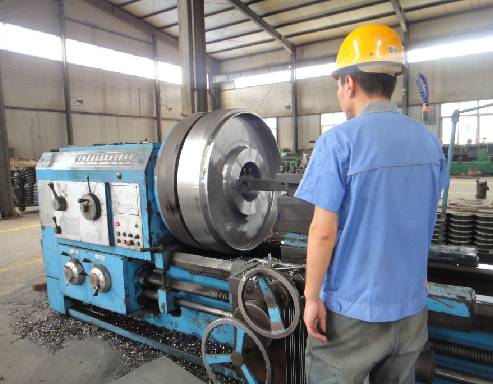 Afrikaans
Afrikaans  Albanian
Albanian  Amharic
Amharic  Arabic
Arabic  Armenian
Armenian  Azerbaijani
Azerbaijani  Basque
Basque  Belarusian
Belarusian  Bengali
Bengali  Bosnian
Bosnian  Bulgarian
Bulgarian  Catalan
Catalan  Cebuano
Cebuano  Corsican
Corsican  Croatian
Croatian  Czech
Czech  Danish
Danish  Dutch
Dutch  English
English  Esperanto
Esperanto  Estonian
Estonian  Finnish
Finnish  French
French  Frisian
Frisian  Galician
Galician  Georgian
Georgian  German
German  Greek
Greek  Gujarati
Gujarati  Haitian Creole
Haitian Creole  hausa
hausa  hawaiian
hawaiian  Hebrew
Hebrew  Hindi
Hindi  Miao
Miao  Hungarian
Hungarian  Icelandic
Icelandic  igbo
igbo  Indonesian
Indonesian  irish
irish  Italian
Italian  Japanese
Japanese  Javanese
Javanese  Kannada
Kannada  kazakh
kazakh  Khmer
Khmer  Rwandese
Rwandese  Korean
Korean  Kurdish
Kurdish  Kyrgyz
Kyrgyz  Lao
Lao  Latin
Latin  Latvian
Latvian  Lithuanian
Lithuanian  Luxembourgish
Luxembourgish  Macedonian
Macedonian  Malgashi
Malgashi  Malay
Malay  Malayalam
Malayalam  Maltese
Maltese  Maori
Maori  Marathi
Marathi  Mongolian
Mongolian  Myanmar
Myanmar  Nepali
Nepali  Norwegian
Norwegian  Norwegian
Norwegian  Occitan
Occitan  Pashto
Pashto  Persian
Persian  Polish
Polish  Portuguese
Portuguese  Punjabi
Punjabi  Romanian
Romanian  Russian
Russian  Samoan
Samoan  Scottish Gaelic
Scottish Gaelic  Serbian
Serbian  Sesotho
Sesotho  Shona
Shona  Sindhi
Sindhi  Sinhala
Sinhala  Slovak
Slovak  Slovenian
Slovenian  Somali
Somali  Spanish
Spanish  Sundanese
Sundanese  Swahili
Swahili  Swedish
Swedish  Tagalog
Tagalog  Tajik
Tajik  Tamil
Tamil  Tatar
Tatar  Telugu
Telugu  Thai
Thai  Turkish
Turkish  Turkmen
Turkmen  Ukrainian
Ukrainian  Urdu
Urdu  Uighur
Uighur  Uzbek
Uzbek  Vietnamese
Vietnamese  Welsh
Welsh  Bantu
Bantu  Yiddish
Yiddish  Yoruba
Yoruba  Zulu
Zulu Understanding the Role of Snub Pulleys in Belt Conveyor Systems and Their Functionality
The Role of the Snub Pulley in Belt Conveyors
Belt conveyors are an essential component in various industrial applications, ranging from mining and manufacturing to packaging and distribution. Among the critical components of a belt conveyor system is the snub pulley, which plays a vital role in the system's efficiency and effectiveness. This article aims to explore the function, advantages, and installation considerations of the snub pulley within a belt conveyor mechanism.
A snub pulley is a small, non-driven pulley that is positioned in close proximity to a larger, driven pulley. Its primary function is to provide additional tension to the conveyor belt, thereby ensuring that the belt maintains adequate contact with the drive pulley. This contact is crucial for effective power transmission, allowing the drive pulley to pull the belt smoothly and efficiently.
One of the key reasons for utilizing a snub pulley is to increase the friction between the drive pulley and the belt. By increasing the contact area, the snub pulley enhances the grip that the drive pulley has on the belt, which is especially important in applications where heavy loads need to be transported. The additional tension created by the snub pulley also helps in preventing belt slippage, which can lead to wear and damage over time.
In addition to improving traction, the snub pulley helps in achieving better belt alignment. Misalignment of the conveyor belt can lead to various operational issues, including increased wear on the belt and other components, reduced efficiency, and even complete system failure. The strategic placement of a snub pulley can help guide the belt, reducing the likelihood of lateral movement and ensuring that it remains on its designed track throughout its operational cycle.
snub pulley is used in a belt conveyor

Another significant advantage of using a snub pulley is its contribution to the overall life expectancy of the conveyor system. By reducing wear and tear caused by slippage or misalignment, the snub pulley can help extend the operational life of the belt and associated components. This not only leads to lower maintenance costs but also minimizes downtime, allowing businesses to maintain high productivity levels.
When it comes to installation, proper placement and sizing of the snub pulley are critical. The distance from the drive pulley, the angle of the snub pulley, and the tension in the belt all need to be carefully considered. Typically, the snub pulley is located at an angle that optimally increases the belt’s contact with the drive pulley while also maximizing tension. It is essential to ensure that the snub pulley is not too far or too close to the drive pulley, as this could result in either insufficient tension or excessive bending stress on the belt.
Material selection for the snub pulley is also crucial. It is typically made from durable materials that can withstand the wear and tear of industrial applications, such as steel or heavy-duty plastic. The choice of material, along with the design of the pulley, will influence factors such as longevity, maintenance requirements, and overall conveyor system performance.
In conclusion, the snub pulley is a fundamental element in the design and operation of belt conveyors. Its ability to enhance traction, improve belt alignment, and extend the lifespan of the conveyor system makes it an invaluable component across various industries. Understanding the importance of the snub pulley, along with proper installation and maintenance practices, can significantly improve the efficiency and reliability of belt conveyor systems. As industries continue to evolve and demand more efficient material handling solutions, the snub pulley will remain a critical factor in maximizing conveyor performance and ensuring operational success.
-
Revolutionizing Conveyor Reliability with Advanced Rubber Lagging PulleysNewsJul.22,2025
-
Powering Precision and Durability with Expert Manufacturers of Conveyor ComponentsNewsJul.22,2025
-
Optimizing Conveyor Systems with Advanced Conveyor AccessoriesNewsJul.22,2025
-
Maximize Conveyor Efficiency with Quality Conveyor Idler PulleysNewsJul.22,2025
-
Future-Proof Your Conveyor System with High-Performance Polyurethane RollerNewsJul.22,2025
-
Driving Efficiency Forward with Quality Idlers and RollersNewsJul.22,2025





























